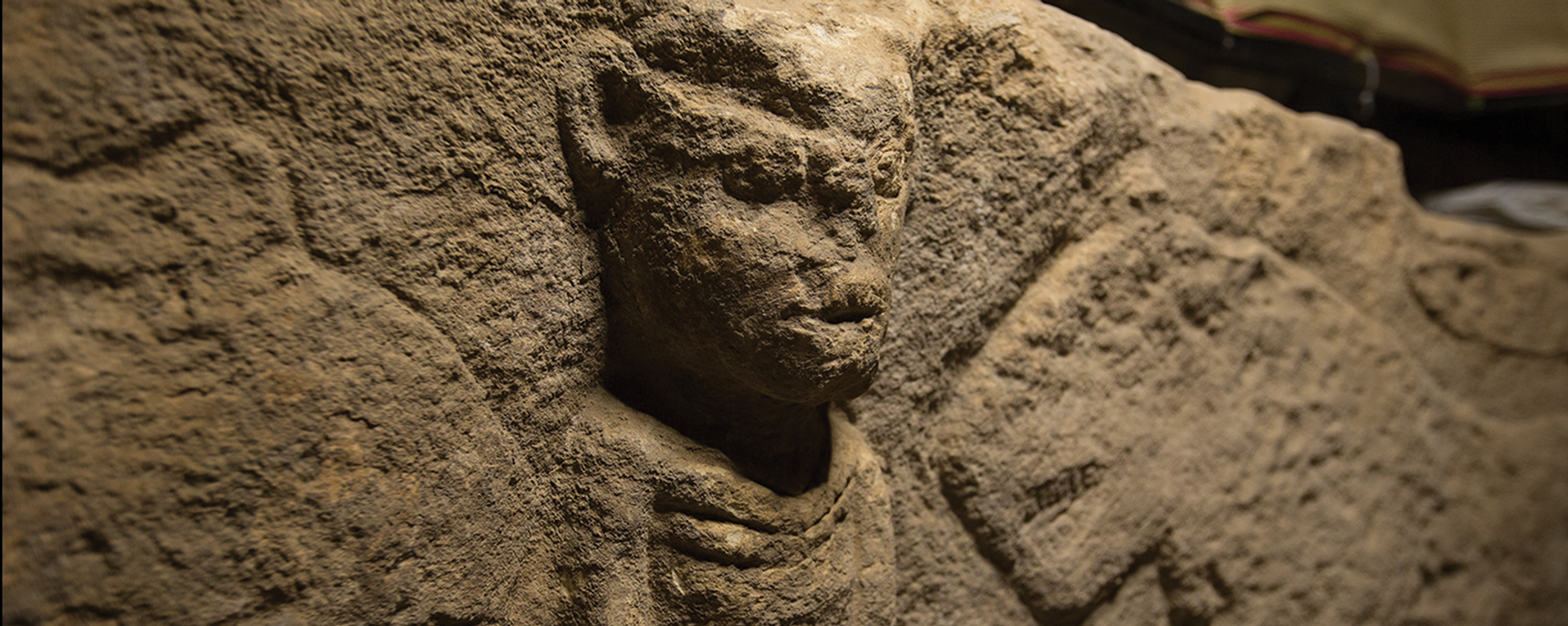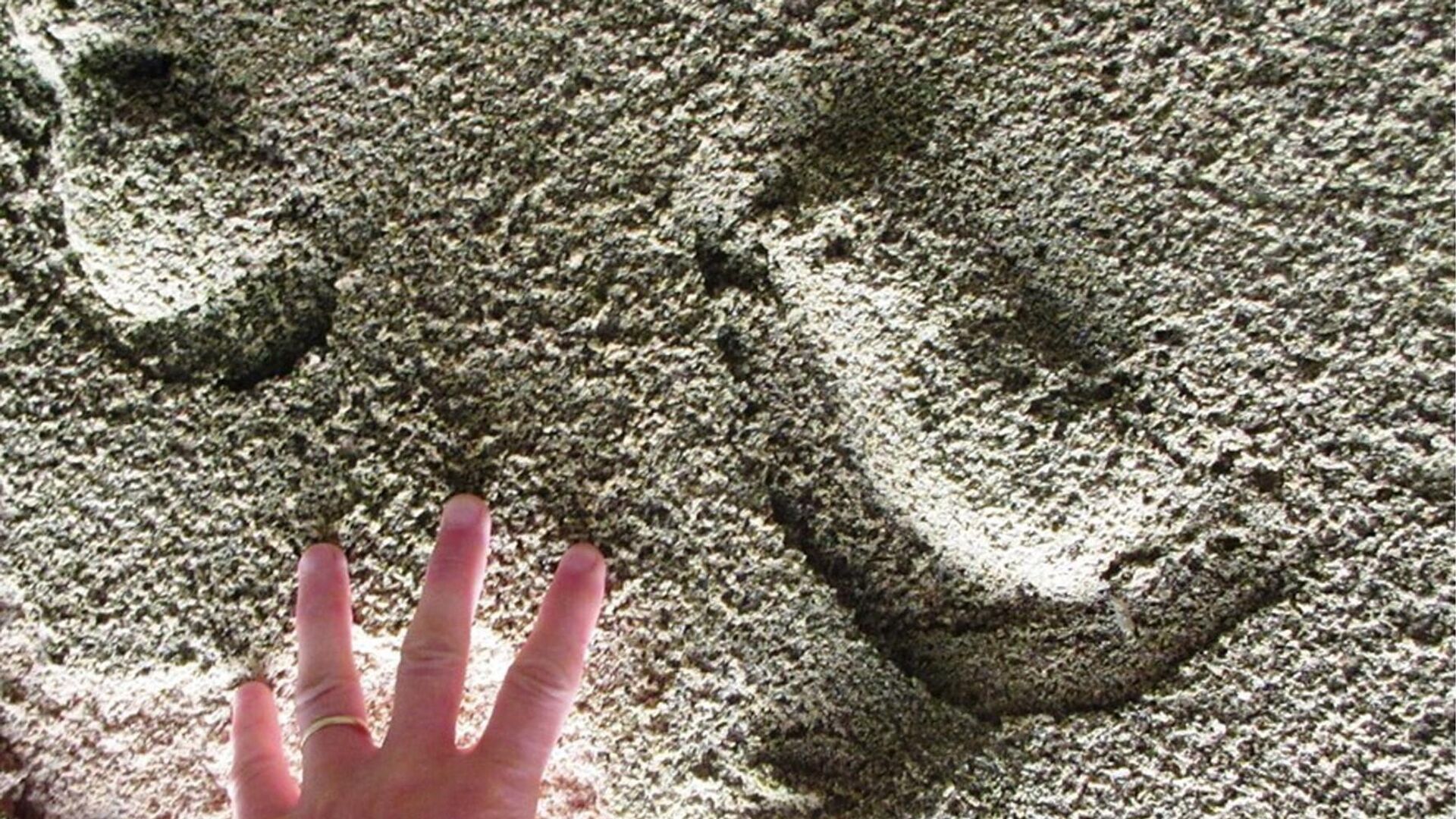https://sputnikglobe.com/20230615/oldest-footprint-of-homo-sapiens-discovered-in-south-africa-1111198649.html
Oldest Footprint of Homo Sapiens Discovered in South Africa
Oldest Footprint of Homo Sapiens Discovered in South Africa
Sputnik International
Newly discovered ancient footprints on South Africa's Cape south coast have provided valuable insights into the movement and behavior of our human ancestors.
2023-06-15T23:46+0000
2023-06-15T23:46+0000
2023-06-15T23:45+0000
beyond politics
science & tech
south africa
homo sapiens
footprint
history
ancient history
https://cdn1.img.sputnikglobe.com/img/07e7/06/0f/1111199129_0:178:1777:1178_1920x0_80_0_0_de2a2f81b4c008cacaae411622cf48ed.jpg
Newly discovered ancient footprints on South Africa's Cape south coast have provided valuable insights into the movement and behavior of our human ancestors.The footprints, which range in age from 71,000 years to 153,000 years, include one of the oldest footprint ever attributed to Homo sapiens. The findings contribute to a growing number of hominin ichnosites - described as sites with tracks and other traces - in Africa, challenging the belief that such sites were ever rare.Previously, only four sites in Africa were reported, two in East Africa (Laetoli in Tanzania and Koobi Fora in Kenya) and two in South Africa (Nahoon and Langebaan). However, the recent discovery of seven newly dated hominin ichnosites on the Cape south coast has expanded the tally to 14, forming a South African cluster of nine sites.There are notable differences between the East African and South African tracksite clusters. The East African sites are much older, with tracks made by earlier species like australopithecines, Homo heidelbergensis, and Homo erectus. However,he South African sites, attributed to Homo sapiens, are younger and typically found in exposed rocks known as aeolianites, which are ancient dunes turned into cemented formations.Although the South African sites are less well-preserved due to exposure and erosion, they can be dated using optically stimulated luminescence, a method that measures the time since sediment was last exposed to sunlight.The researchers expect further discoveries of hominin ichnosites on the Cape south coast and other coastal regions, with the search expanding to older deposits ranging from 400,000 to over 2 million years old. These ongoing investigations will provide scientists with a broader understanding of our ancient ancestors and the environments they inhabited.The findings were published in the journal Ichnos.
https://sputnikglobe.com/20221212/first-narrative-in-human-history-discovered-in-turkey-and-it-contains-nudity-1105369367.html
https://sputnikglobe.com/20230521/game-changer--huge-network-of-ancient-mayan-cities-and-highways-could-rewrite-history-1110507955.html
south africa
Sputnik International
feedback@sputniknews.com
+74956456601
MIA „Rossiya Segodnya“
2023
News
en_EN
Sputnik International
feedback@sputniknews.com
+74956456601
MIA „Rossiya Segodnya“
Sputnik International
feedback@sputniknews.com
+74956456601
MIA „Rossiya Segodnya“
homo sapiens, south africa, human history, prehistoric age evidence, human footprints, south africa cape, origin of the human species
homo sapiens, south africa, human history, prehistoric age evidence, human footprints, south africa cape, origin of the human species
Oldest Footprint of Homo Sapiens Discovered in South Africa
The Cape south coast footprints offer crucial information about early anatomically modern humans who inhabited the region before migrating out of Africa. Alongside other evidence, such as stone tools, art, jewelry and shellfish harvesting, the footprints confirm that the Cape south coast was a significant area where early humans thrived.
Newly discovered ancient footprints on South Africa's Cape south coast have provided valuable insights into the movement and behavior of our human ancestors.
The footprints, which range in age from 71,000 years to 153,000 years, include one of the oldest footprint ever attributed to Homo sapiens. The findings contribute to a growing number of hominin ichnosites - described as sites with tracks and other traces - in Africa, challenging the belief that such sites were ever rare.
Previously, only four sites in Africa were reported, two in East Africa (Laetoli in Tanzania and Koobi Fora in Kenya) and two in South Africa (Nahoon and Langebaan). However, the recent discovery of seven newly dated hominin ichnosites on the Cape south coast has expanded the tally to 14, forming a South African cluster of nine sites.

12 December 2022, 15:24 GMT
There are notable differences between the East African and South African tracksite clusters. The East African sites are much older, with tracks made by earlier species like australopithecines, Homo heidelbergensis, and Homo erectus.
However,he South African sites, attributed to Homo sapiens, are younger and typically found in exposed rocks known as aeolianites, which are ancient dunes turned into cemented formations.
Although the South African sites are less well-preserved due to exposure and erosion, they can be dated using optically stimulated luminescence, a method that measures the time since sediment was last exposed to sunlight.
The researchers expect further discoveries of hominin ichnosites on the Cape south coast and other coastal regions, with the search expanding to older deposits ranging from 400,000 to over 2 million years old. These ongoing investigations will provide scientists with a broader understanding of our ancient ancestors and the environments they inhabited.
The findings were published in the journal
Ichnos.




